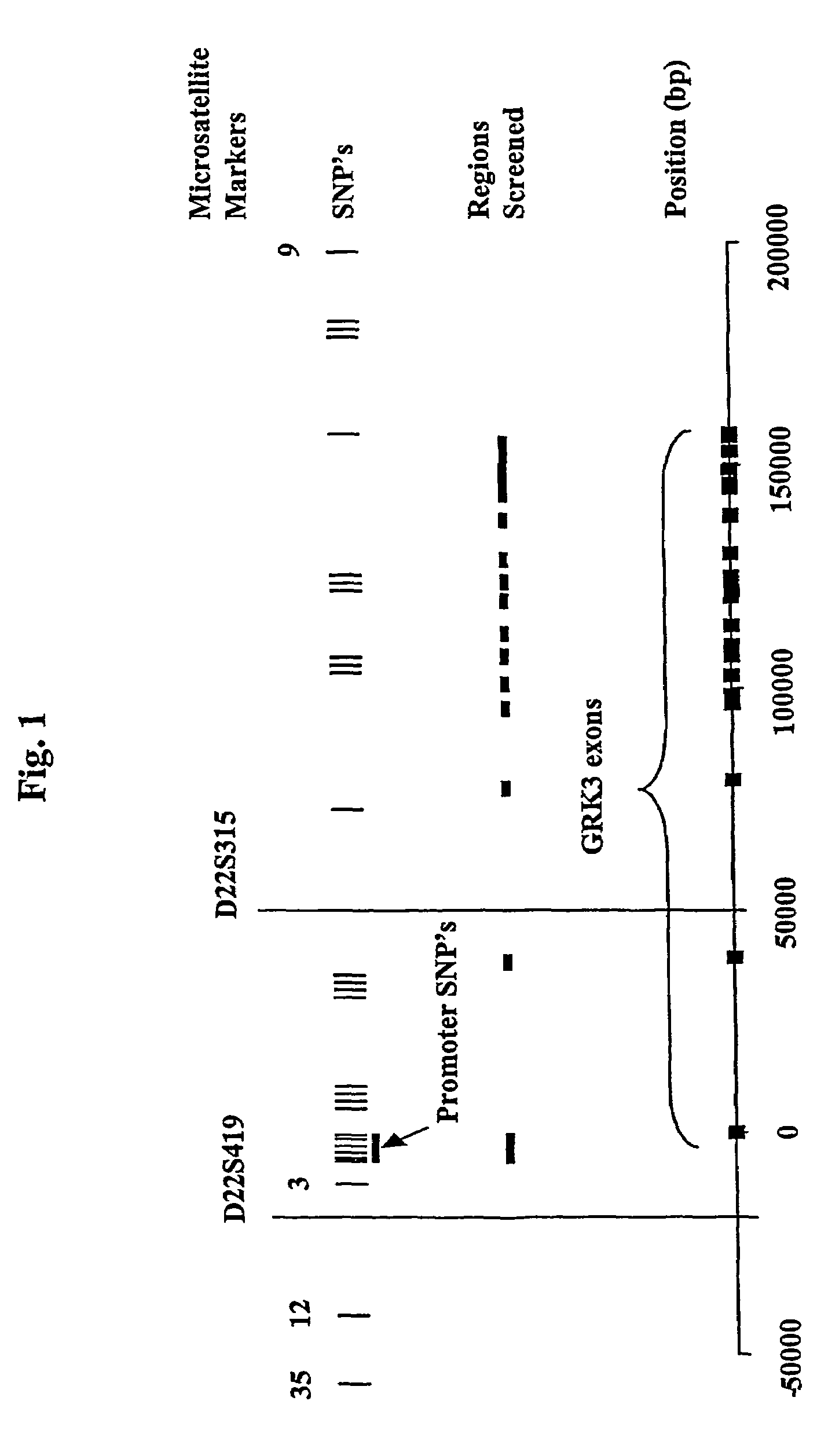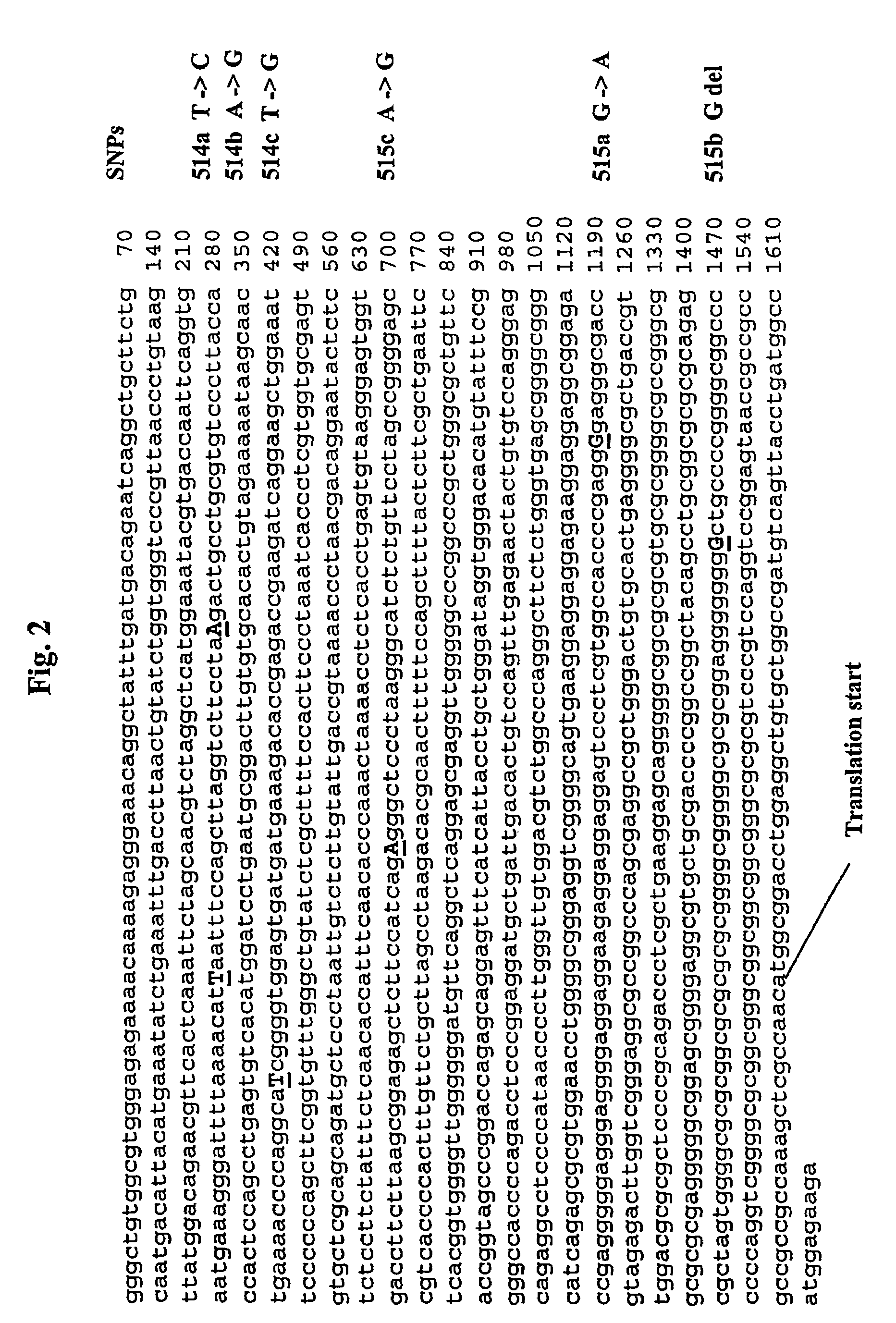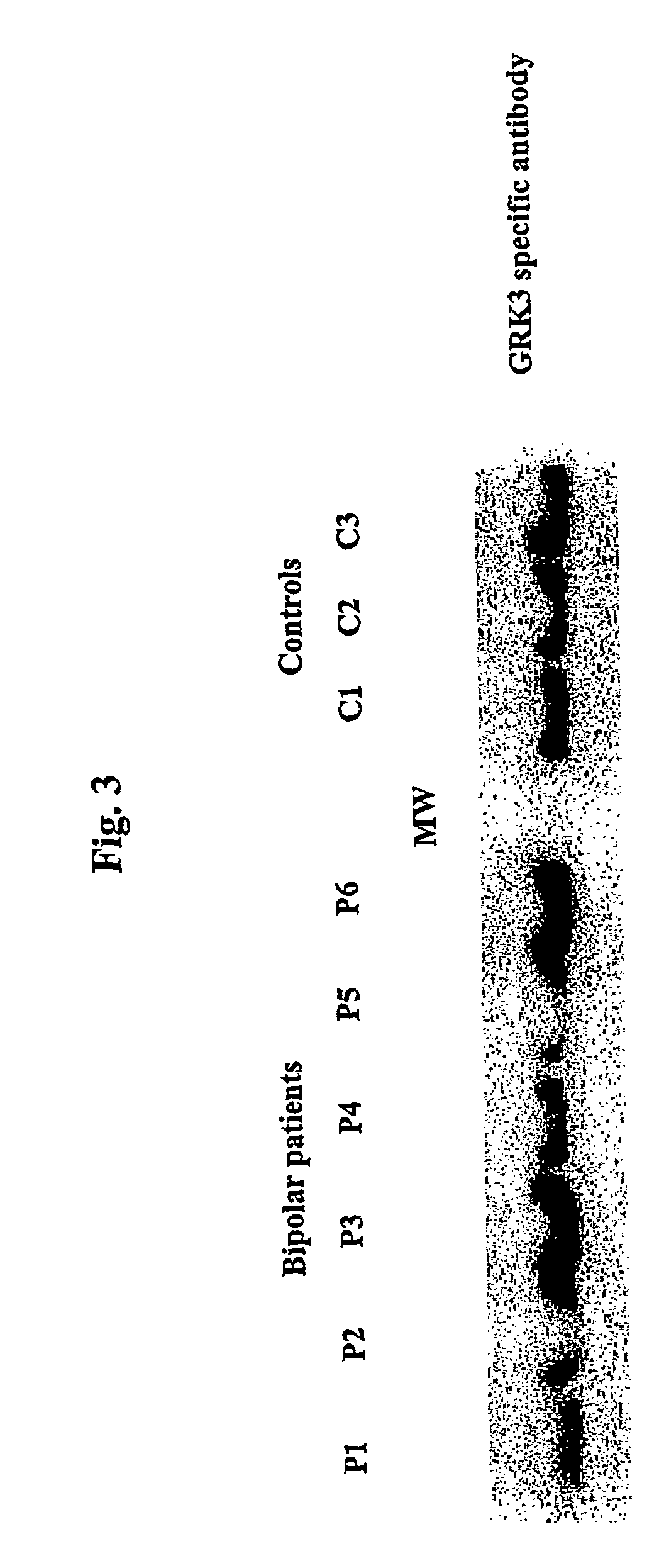Methods for diagnosis and treatment of psychiatric disorders
a psychiatric disorder and treatment method technology, applied in the field of psychiatric disorders diagnosis and treatment, can solve the problems of bipolar disorder treatment being problematic, common misdiagnosis, and worsening the clinical picture of patients
- Summary
- Abstract
- Description
- Claims
- Application Information
AI Technical Summary
Benefits of technology
Problems solved by technology
Method used
Image
Examples
example 1
Amphetamine Treatment
[0152]In these experiments, a rat animal model was used to identify susceptibility genes. These experiments were done twice, independently, with different sets of animals and at different times, to assess reproducibility.
[0153]Three Sprague Dawley rats were treated with 4 mg / kg amphetamine, while another three rats were treated with normal saline injection (i.e., negative-control animals). After 24 hours, the rats were humanely sacrificed and the brains were harvested.
example 2
Tissue Testing and Analysis
[0154]In these experiments, the brain tissues obtained from the rats described in Example 1 were processed and tested. Samples were handled according to the recommendation of Affymetrix, the manufacturer of the GeneChips used during the development present invention In the experiments described in greater detail below, the Affymetrix U34A chip, which measures 7,000 cDNAs and 1,000 ESTs, was used. The analyses were conducted at the University of California, San Diego / Veteran's Administration Center GeneChip Core Facility.
[0155]Tissues from each brain region from the three animals in each experimental group were pooled (i.e., test and control animals). Total RNA was isolated from the tissue using standard protocols known in the art. Briefly, STAT-60 extraction buffer, and phenol / chloroform extraction was used. cDNA was synthesized and used as templates to produce biotin-labelled antisense cRNAs using an in vitro transcription reaction. After fragmentation, t...
example 3
Mutation Screening of GRK3
[0158]In these experiments, portions of the GRK3 gene locus were amplified and directly sequenced from 14 bipolar patients and 6 control subjects.
[0159]The GRK3 gene spans 21 exons over 170 kb. Using the available genomic sequence, PCR primers were designed so as to individually amplify each of the 21 exons including approximately 200 bp of flanking intronic sequence which contains splicing signals. Primers were also designed to amplify approximately 1.6 kb in the 5′ promoter region in four overlapping segments. In order to enrich the sample to be screened for those subjects most likely to contain a functional mutation in the GRK3 gene, families were identified from the 20 families that were part of an earlier genome scan and the 57 NIMH families which showed a positive lod score for the marker D22S419. Fourteen such bipolar subjects were identified and their DNA was PCR amplified for each of these regions. In addition to these 14 affected subjects from fam...
PUM
| Property | Measurement | Unit |
|---|---|---|
| temperature | aaaaa | aaaaa |
| disorder | aaaaa | aaaaa |
| psychiatric disorders | aaaaa | aaaaa |
Abstract
Description
Claims
Application Information
 Login to View More
Login to View More - R&D
- Intellectual Property
- Life Sciences
- Materials
- Tech Scout
- Unparalleled Data Quality
- Higher Quality Content
- 60% Fewer Hallucinations
Browse by: Latest US Patents, China's latest patents, Technical Efficacy Thesaurus, Application Domain, Technology Topic, Popular Technical Reports.
© 2025 PatSnap. All rights reserved.Legal|Privacy policy|Modern Slavery Act Transparency Statement|Sitemap|About US| Contact US: help@patsnap.com



